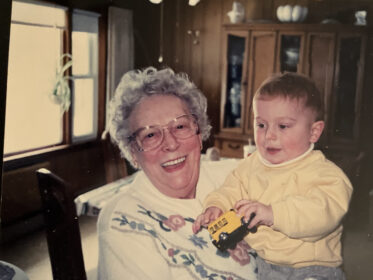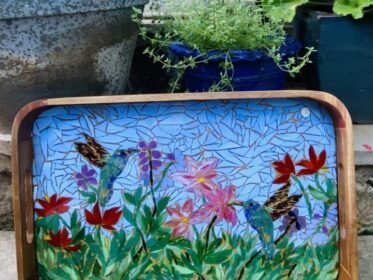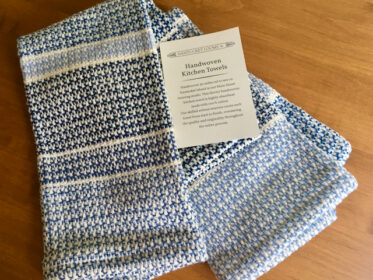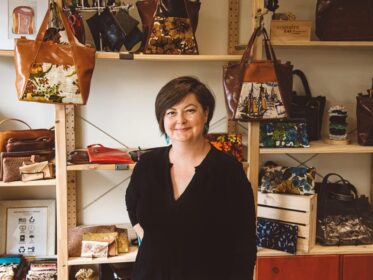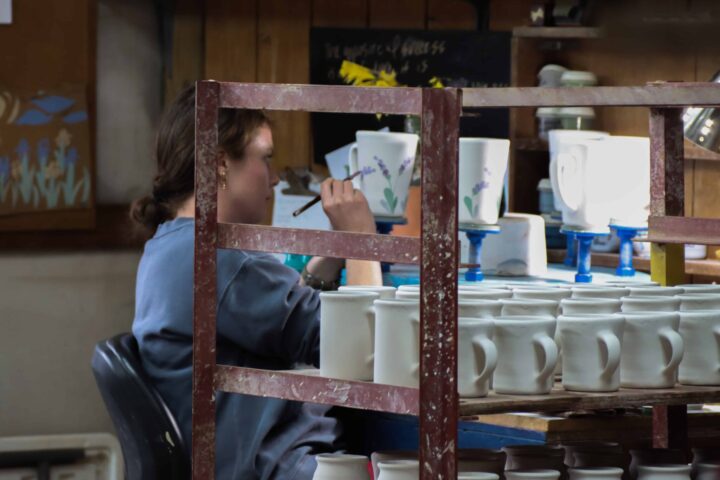
“I wanted to make pottery that people could put their hands on and use,” Jim Leavitt, one of Emerson Creek’s founders, said in a video several years ago. Not only did he want people to use his art, but he wanted his art to be handcrafted.
Handcrafted means to be made by hand, using old-school methods that are often passed down from one generation to another.
At Emerson Creek Pottery, artisans literally have their hands in or on the clay through the entire process, from adding the raw materials to the mix machine to hand-painting items before they’re fired in the high-temperature kilns.
Founded in the early 1970s by two potters, Emerson Creek Pottery began in Uxbridge, MA in what was known as the Emerson House, named after the family of Ralph Waldo Emerson. Emerson Creek Pottery’s namesake was the creek that ran by Emerson House. The company relocated to Bedford County, VA in the late 1970s.
Over 45 years later, “handcrafted functional art” continues to be the company’s mission — a testament to Jim Leavitt’s vision and passion.
I first discovered Emerson Creek Pottery in 2015. I needed a toothbrush holder and was pleasantly surprised when I found one made by Emerson Creek. I still use it to this day and love it.
Fast forward to 2022 when I got my dog, Rocky. Because I had very little time to prepare for his arrival, I went to my local independently-owned pet supply store and bought a ton of stuff, including metal food bowls (not made here).
The bowls each had a rubber ring to keep them from slipping – but they also leaked! I was constantly wiping up water. Earlier this year, I had finally had enough and decided it was time to purchase new bowls. Plus, I wanted to celebrate Rocky turning three years old – and the end of the intense GSD puppy / adolescent period. Yay!
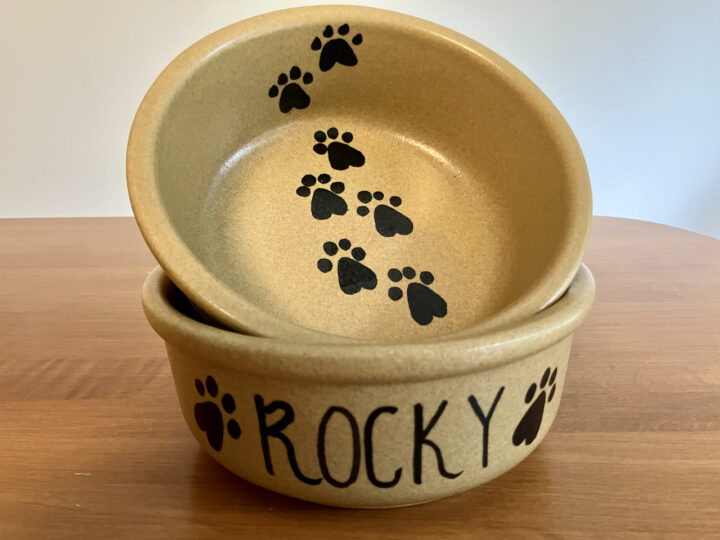
I’d been getting the Emerson Creek emails, so I headed over to the website and purchased this handsome set. They match Rocky’s black & tan markings, plus I had one bowl personalized with his name. Totally unnecessary but fun!
I love knowing an Emerson Creek Pottery artisan painted the paw prints and his name. Functional art that’s usable — yes, indeed.
Hands-on process start to finish
According to Elena Leavitt the company’s co-Vice President (and Jim Leavitt’s daughter), the company’s manufacturing process is a step between traditional ceramic hand-throwing and the fully industrialized automatic systems used to make ceramics you find at big box stores.
Emerson Creek uses the traditional hand-thrown process to create original pieces, which are then turned into models and molds.
All raw materials are sourced from North American mines and material distributors for strict quality control assurance. All clays, glazes, and slip (clay in liquid form) are mixed in-house using custom formulas developed since the company’s founding.
Once mixed, the clay is formed using RAM press machines and cast finishing. Watch the video.
The different types and uses of ceramics
Ceramics are simply products made from clay: dishware, jugs and pitchers, vases, decorative bowls and platters, furniture knobs, lamp bases, cookie jars, and even toothbrush holders — to name several of the hundreds of uses for ceramics.
As I wrote this piece, I walked around my house and was pleasantly surprised to see the different ceramic items I own – and all of them functional art!
How a clay is mixed, and then treated once it’s been formed and glazed, often determines its finish and use.
The three common ceramic types include porcelain, earthenware, and stoneware.
Porcelain usually has minerals mixed in to give it strength and translucency and is then fired at high temperatures.
While porcelain is usually associated with fine china or collectables, it’s also used for industrial purposes, such as electrical transformers. (As an aside, my son’s great-grandmother was a ceramist and made very fine porcelain figurines that people collected. She had a huge kiln in her cellar. See the link to her story below.)
Because it’s fired at much lower temperatures, earthenware is more porous, and thus isn’t as strong as porcelain. Unglazed, it’s limited in its color range to reds and browns — think terracotta flower pots. When it is glazed, earthenware is often used for purposes such as decorative platters or other functional items.
Although it is water-proof, earthenware isn’t as impervious to liquids or as durable as porcelain or stoneware. It’s also easily chipped, something I’ve learned the hard way.
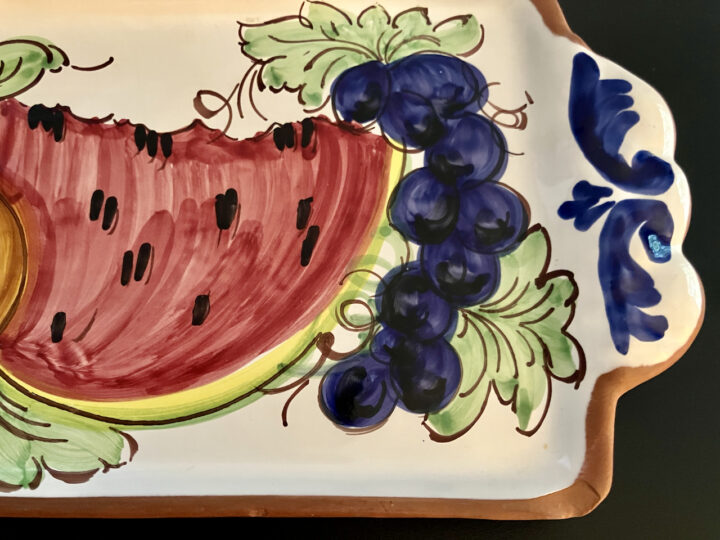
Emerson Creek stoneware — functional, durable, and lead-safe
The company handcrafts a full line of beautiful and functional stoneware home goods, kitchenware, and dinnerware sets.
“Our stoneware,” says Elena, “is high-fired, meaning it becomes almost completely vitrified during the firing process. Vitrification means it’s impervious to water or other liquids. It’s what makes our stoneware dishwasher safe and sturdy for daily use.
“We don’t use any lead or cadmium or other potentially toxic material in any of our processes,” she adds. “However, because we do use raw earth materials, there may be minuscule trace amounts of naturally occurring elements. No ceramic piece can be 100% lead-free or cadmium-free.”
The company’s processes and products meet or exceed trusted safety standards, including California Prop 65.
Making shortbread — yum!!
Because I wasn’t that familiar with stoneware bakeware, I ordered the company’s Ceramic Shortbread Pan. These pans were developed by Brown Bag Designs, which Emerson Creek purchased in 2015 (it’s now a wholly-owned subsidiary).
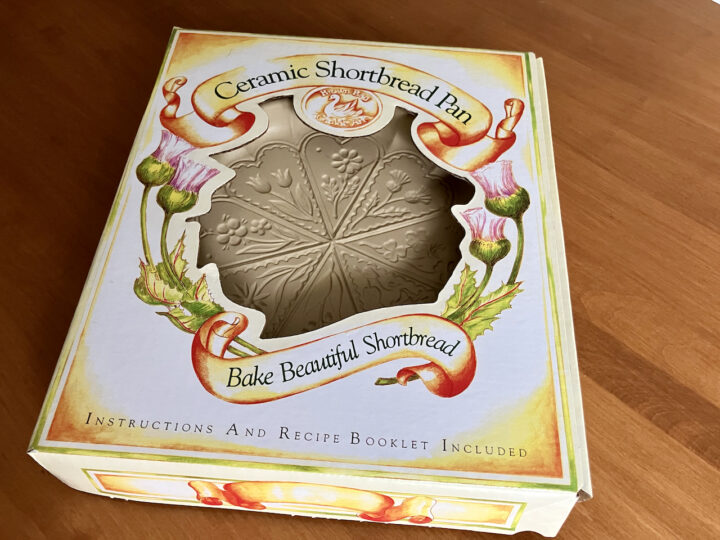
I used to regularly make shortbread back in the day, when making cookies for my son was a weekly occurrence. (In fact, if I were to send him a care package of cookies today, he’d send me a text almost sobbing with gratitude — despite being 28 years old.)
The shortbread pan I used then was made of thin aluminum with a push-out bottom. Despite becoming a little warped over the years, it worked; but once I was no longer making cookies, I donated it.
So, I was intrigued by Emerson Creek’s engraved stoneware Shortbread Pan and ordered the Celtic design. The day after it arrived, I made shortbread using the recipe booklet that came with it.
I began eating it as soon as it was cool enough to remove from the pan, and then realized I had eaten my photo. Oh no! I made a second batch, which came out better than first one.
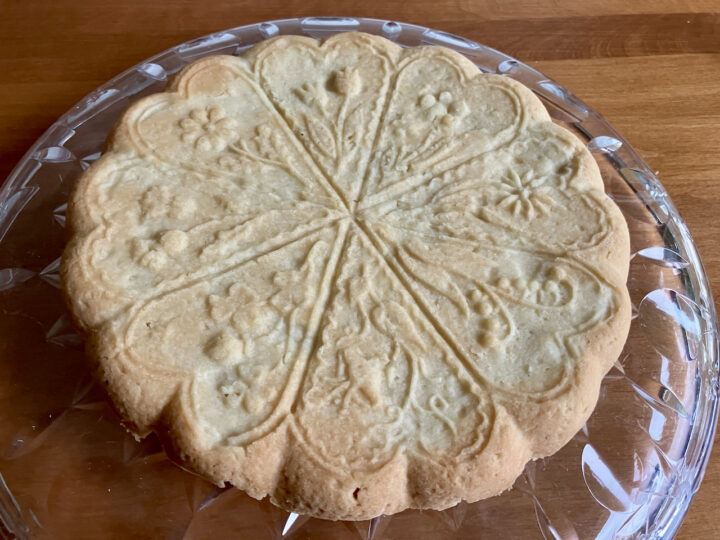
After taking the photo, I carefully cut the shortbread into slices and gave the batch to my neighbor. She texted a few minutes later, “OMG, this is delicious!” I know. I ate the entire first batch myself. Nothing like pure butter, sugar, flour, and a dash of vanilla to make you feel good.
(As an aside, I’m really glad I’m not a food blogger! I stressed over the shortbread photo, and took several others, to get it food blog worthy, but gave up. It’s enough that I stress over my writing. Working to attain perfection with food styling and photos would do me in.)
Support skilled artisans and American jobs
I like that Emerson Creek Pottery puts so much heart and passion into their work, and that everything they sell is 100% handcrafted in America. I’m not the only one.
“We do have a lot of customers who find us through looking for Made in America searches for pottery,” says Elana. “They want to be more conscious about what they’re using in their homes — whether from a health concern or an ethical standpoint of wanting to support American jobs. They want to know the people making their dinnerware are treated fairly and ethically.”
When asked if the company has any big plans or changes, Elena says, “We plan to continue making and selling hand-crafted pottery to be used daily — as we also continue moving forward with our second-generation of owner/operators while supporting the people who continue to make conscious buying decisions.”
Thank you, Elena, for your time. I’m so happy I reached out!
To learn more about Emerson Creek Pottery, including its history and process, and to buy products, visit their website at https://emersoncreekpottery.com.
Get the Keep It Made USA newsletter.
Twice monthly; zero spam.
Links
While writing, I remembered my son’s great-grandmother was a potter. Read her story: Laura Jakstis, Ceramist, 1916 – 2007.
Full Disclosure
I’m not paid nor asked to write about products or the companies that make them. All links in this piece are FREE — meaning, they’re not sponsored or paid for. I buy products, use them, and if I like them, I tell everyone about them.
I do this because my mission is to keep manufacturing jobs stateside. This mission is my way of giving back. We like to think our “small” choices won’t make a difference. They do.

